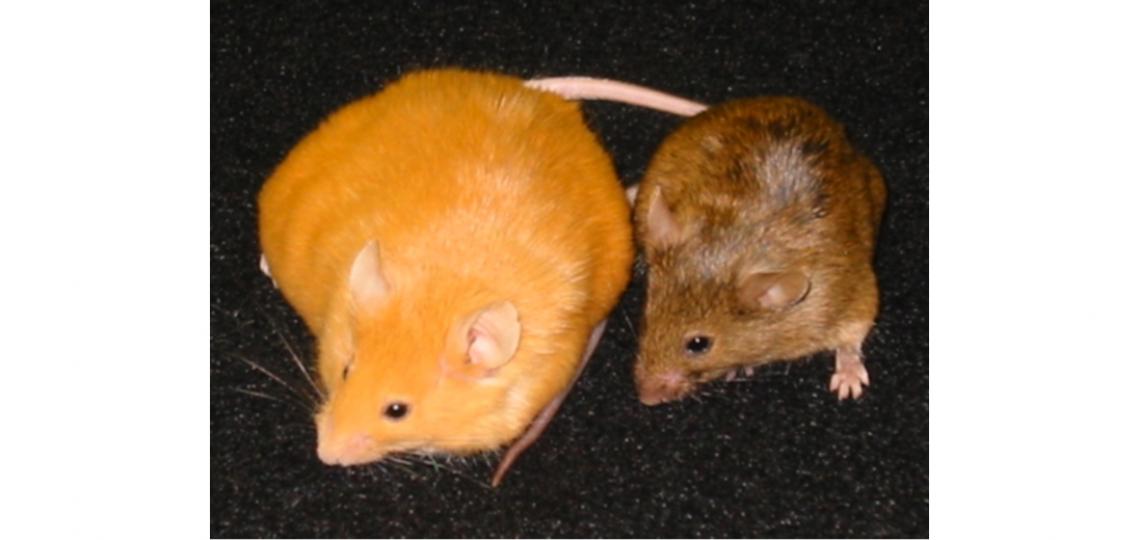
The Power of Epigenetics
These two agouti viable yellow (Avy) heterozygous littermates are genetically identical. Their physical differences are due to a naturally-occurring difference in DNA methylation at the Avy metastable epiallele. We are working to understand to what extent such epigenetic differences regulate human traits such as risk of disease.
Research Projects
Identification and characterization of human metastable epialleles
There is growing interest in the idea that, just like genetic variation, epigenetic variation among people may affect one’s risk of disease. But testing this in humans is complicated. To test for associations between genetic variation and disease, scientists can obtain a DNA sample from any tissue (usually blood, since it can be easily sampled). The DNA sequence is the same regardless of which tissue or cell type is sampled, so we can speak of an individual’s DNA sequence. But testing for associations between epigenetic variation and disease is more complicated, because epigenetic marks (like DNA methylation) can vary among different cell types. (This makes sense, because epigenetic mechanisms are a key part of differentiation, the developmental process that makes diverse cell types in the body different from one another.) Consequently, DNA methylation in blood (or other easily-sampled tissues) might not reflect epigenetic changes that occur only in specific cell types, and which could play a role in disease.
We believe that metastable epialleles provide the easiest way to circumvent this problem. First discovered in mice, metastable epialleles are genomic regions at which DNA methylation varies dramatically among individuals, but is consistent across different tissues within each individual. Studies in inbred (genetically identical) mice showed that this interindividual variation is not due to genetics, but is established stochastically (probabilistically) during early development. Based on the characteristics of metastable epialleles in mice, over the last decade we have been leading the field, working to identify and characterize regions in the human genome that behave as metastable epialleles. Many of the candidate metastable epialleles we have discovered are linked to genes with known roles in disease such as cancer and obesity. We are now collaborating with epidemiologists, who have established large prospective cohort studies, to determine whether interindividual epigenetic variation at these loci predicts subsequent risk of disease.
Epigenetic mechanisms in energy balance regulation
In 1970 less than half of American adults were overweight or obese. Now, more than two thirds are. Because obesity is a risk factor for other diseases including type-2 diabetes, cardiovascular disease, and cancer, our obesity epidemic is the biggest nutrition-related medical issue in the United States. And it’s not just in the U.S.; the dramatic and rapid increase in adult body mass index is a worldwide phenomenon.
To try to get at why this is happening, we are working to improve our understanding of the fundamental mechanisms that determine weight gain. The overall balance of energy consumed (from food) and energy expended (or burned) is called ‘energy balance’. When people gain weight, it reflects positive energy balance. Energy balance is regulated in the brain. In particular, one brain region, the hypothalamus, plays a primary role, sensing the body’s energy stores and sending signals to other brain regions to increase or decrease energy intake and expenditure as needed. This exquisite system develops as part of normal brain development during fetal life. Our overall hypothesis is that the changing environment over the last several decades (in terms of nutrition, maternal obesity, etc.) may be influencing hypothalamic development, leading to a permanent alterations in the energy sensing mechanism, favoring positive energy balance. We are exploring the role of epigenetic mechanisms, particularly DNA methylation, in this process.








